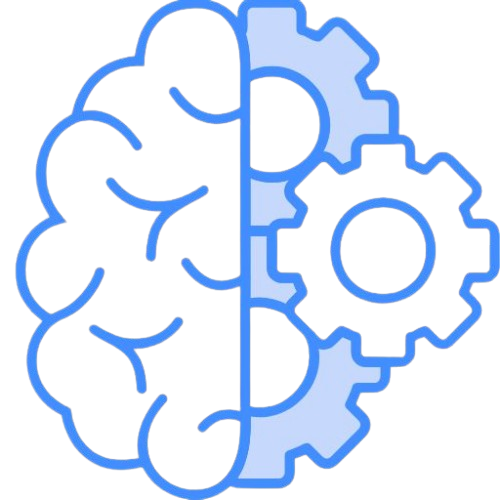Understanding Simpcitu: Navigating the Struggles of Conflicting Beliefs
Simpcitu is a concept that describes the experience of holding conflicting beliefs or ideas. It often leads to cognitive dissonance, where a person feels mental discomfort due to these contradictions. This can happen in personal beliefs, social interactions, or digital spaces.
In today’s fast-paced world, people are constantly exposed to new information. Sometimes, this information challenges what they already believe. Simpcitu occurs when someone struggles to reconcile these opposing thoughts.
For example, a person may believe in a healthy lifestyle but still indulge in unhealthy habits. They might justify their actions by saying, “One cheat day won’t hurt,” even if it contradicts their core belief. This psychological conflict is a key sign of Simpcitu.
The digital world has made this phenomenon even more common. Social media influence exposes people to different viewpoints, often leading to information overload. Algorithms also create digital echo chambers, where people see only the information that aligns with their existing beliefs.
This experience is not always negative. It can encourage critical thinking and personal growth. When managed well, it helps individuals develop a more balanced perspective on life.
However, if ignored, these mental contradictions can lead to decision paralysis and confusion. They may also cause people to cling to misinformation online to avoid discomfort. Understanding this concept is the first step toward overcoming its negative effects.
This blog will explore the causes and effects of contradictory thinking. We will discuss its psychological roots, its role in the digital age cognitive challenges, and its effects on society. Finally, we will provide strategies to navigate and overcome these biases in decision-making in everyday life.
| Aspect | Facts & Details | Figures & Stats |
|---|
| Concept of Simpcitu | Describes the experience of holding conflicting beliefs or ideas, leading to cognitive dissonance and mental discomfort. | Affects personal beliefs, social interactions, and digital spaces |
| Psychological Conflict | Occurs when a person struggles to reconcile opposing beliefs, often leading to justifications to reduce mental discomfort. | Example: “One cheat day won’t hurt” even with healthy lifestyle beliefs |
| Digital Influence | The digital world amplifies Simpcitu through exposure to diverse, often conflicting viewpoints, especially on social media. | Digital echo chambers reinforce existing beliefs |
| Cognitive Dissonance | Happens when a person holds two opposing beliefs, leading to mental discomfort and efforts to resolve it through justification. | Example: “A white lie is harmless” when telling a small lie to avoid hurting a friend |
| Confirmation Bias | People tend to seek information that confirms their pre-existing beliefs, leading to rejection of opposing ideas. | Strengthens existing opinions and prevents learning |
| Cognitive Load | Occurs when an individual is overwhelmed with too much conflicting information, making it difficult to form clear opinions. | Example: Contradictory news on social media creates confusion |
| Emotional Attachment to Beliefs | Deep emotional connections to beliefs make it harder to accept contradictory information, often leading to denial or rejection of facts. | Example: Struggling to accept criticism of an eco-friendly brand |
| Social Media Influence | Information overload from social media makes it difficult for people to form clear opinions, especially when exposed to conflicting perspectives. | Reinforces confirmation bias and cognitive dissonance |
| Echo Chambers | Social media algorithms show content that aligns with existing beliefs, limiting exposure to diverse viewpoints and reinforcing biases. | Leads to political polarization and biases |
| Misinformation | False or misleading information spreads quickly on social media, contributing to confusion and the challenge of distinguishing fact from fiction. | Example: Conflicting health trends (food benefits vs. harms) |
| Managing Contradictory Thinking | By practicing critical thinking, emotional resilience, and filtering information, individuals can navigate conflicting ideas more effectively. | Strategies: Recognize cognitive dissonance, fact-check, avoid echo chambers |
| Strategies for Overcoming Mental Conflicts | Key strategies include recognizing discomfort, practicing critical thinking, avoiding echo chambers, and developing emotional resilience. | Promotes more informed decision-making and personal growth |
| Personal Growth from Contradictory Thinking | When managed well, contradictory thinking encourages critical thinking and self-awareness, leading to personal growth. | Leads to adapting and integrating new perspectives |
| Impact of Emotional Attachment | Emotional attachment to beliefs can prevent individuals from accepting new, contradictory perspectives. | Example: Denying facts about an eco-friendly brand they trust |
| Digital Age Challenges | The fast-paced digital age contributes to cognitive dissonance, creating confusion due to the abundance of conflicting information. | Information overload and echo chambers amplify contradictions |
The Psychology Behind Conflicting Beliefs
Contradictory thinking is deeply connected to how the human brain processes information. It often arises from psychological conflicts that challenge a person’s existing thoughts. Understanding these mental struggles helps in recognizing and managing their effects.
Cognitive Dissonance: The Root of Internal Conflict
Cognitive dissonance happens when a person holds two opposing beliefs at the same time. This creates mental resilience challenges, making the person feel uneasy or uncertain. To reduce this discomfort, people may change their beliefs or justify their actions.
For example, someone who values honesty might tell a small lie to avoid hurting a friend. They may then convince themselves that “a white lie is harmless” to ease their guilt. This mental adjustment helps them reduce the internal conflict they feel.
Confirmation Bias: Reinforcing Existing Beliefs
People naturally seek information that supports their beliefs. This tendency is called confirmation bias. It plays a big role in public opinion manipulation by making individuals ignore or reject opposing ideas.
For instance, if someone strongly believes in a particular diet, they may only read articles that support it. Even if new research contradicts their view, they might dismiss it as false. This bias in decision-making strengthens opinions and prevents open-minded learning.
Cognitive Load: The Struggle to Process Too Much Information
The human brain can only process a limited amount of information at once. When bombarded with too many opposing ideas, it becomes overwhelmed. This cognitive load in decision-making can make forming clear opinions difficult.
Imagine scrolling through social media and seeing contradictory thinking in news stories. One post says a product is healthy, while another claims it is harmful. This overload can create uncertainty, making it hard to decide what to believe.
Emotional Attachment: When Feelings Influence Thinking
People often tie their beliefs to their emotions. When a belief is deeply connected to personal identity, changing it feels like a personal attack. This emotional attachment in beliefs makes it harder to accept new perspectives.
For example, someone who takes pride in being environmentally conscious may struggle to accept criticism of their favorite eco-friendly brand. Even if evidence suggests the brand is misleading customers, their trust in news sources may cause them to deny it.
These struggles are a natural part of human thinking. However, understanding their psychological roots can help people manage them effectively. In the next section, we will explore how the digital age cognitive challenges amplify these problems.
The Digital Age and Its Influence on Contradictory Thinking
The internet has changed how people think and interact. Information spreads faster than ever, often creating confusion. Misinformation online and political polarization and biases have become more common in the digital world due to constant exposure to conflicting narratives.
Social Media and Information Overload
Social media influence floods users with news, opinions, and trends. Every day, people see different perspectives on the same topic. This overwhelming amount of information makes it hard to form clear opinions.
For example, one influencer may promote a certain lifestyle, while another criticizes it. A person following both may struggle to decide which viewpoint is right. This managing conflicting information challenge is a clear sign of information overload.
Echo Chambers: Reinforcing One-Sided Thinking
Social media algorithms show users content that matches their past interactions. This creates digital echo chambers, where people only see information that supports their beliefs. While this feels comforting, it can also limit critical thinking.
For instance, someone who follows a certain political group may only see news that aligns with their views. Opposing perspectives are often hidden or dismissed. This public opinion manipulation strengthens political polarization and biases.
Misinformation and Conflicting Narratives
False or misleading information spreads quickly online. Many people believe what they see without checking the facts. This makes it easier for misinformation online to take hold.
For example, health trends often contradict each other. One article may claim a food is beneficial, while another says it is harmful. This creates confusion and makes it difficult to trust in news sources.
How to Overcome Mental Conflicts
Mental contradictions are a natural part of life, but they do not have to be overwhelming. By practicing critical thinking, emotional resilience, and information filtering, people can navigate conflicting ideas with confidence.
Key Strategies:
- Recognize cognitive dissonance: Notice when you feel mental discomfort.
- Practice critical thinking: Verify sources before believing information.
- Avoid digital echo chambers: Expose yourself to diverse perspectives.
- Manage information overload: Take breaks from social media to reflect.
- Develop emotional resilience: Stay open to changing your views when presented with strong evidence.
By understanding how to manage contradictory thinking, people can make better decisions and think more clearly. Embracing uncertainty as a tool for growth will help navigate modern challenges with confidence.
Conclusion
Contradictory thinking is an inevitable part of human psychology, especially in today’s fast-paced, information-rich world. As people encounter conflicting beliefs or ideas, they often experience cognitive dissonance, leading to discomfort and confusion. The digital age exacerbates this phenomenon, with social media, echo chambers, and misinformation amplifying cognitive challenges. However, understanding the psychological roots of contradictory thinking and its influence in the digital age can help individuals manage these mental conflicts. By practicing critical thinking, emotional resilience, and effectively navigating information overload, we can make more informed decisions, foster personal growth, and engage with the world around us in a more balanced and thoughtful manner.
What is cognitive dissonance, and how does it relate to contradictory thinking?
Cognitive dissonance occurs when an individual holds two opposing beliefs at the same time, creating mental discomfort. This discomfort often leads to efforts to justify or rationalize conflicting ideas to reduce the unease. In the context of contradictory thinking, cognitive dissonance is a key driver of mental conflicts.
How does the digital age influence conflicting beliefs?
The digital age, particularly through social media, floods individuals with vast amounts of information, many of which contradict each other. This constant exposure can make it difficult for people to form clear opinions, creating confusion and reinforcing cognitive dissonance. The digital environment also contributes to the formation of echo chambers, where individuals are exposed primarily to information that supports their pre-existing beliefs.
What is confirmation bias, and how does it impact decision-making?
Confirmation bias is the tendency to seek out information that confirms one’s existing beliefs while ignoring or dismissing information that contradicts them. This bias can lead to poor decision-making as individuals become less open to alternative perspectives or new evidence.
How can I manage information overload and conflicting ideas on social media?
To manage information overload, it’s essential to take breaks from social media, filter out unnecessary content, and expose yourself to diverse perspectives. Practicing critical thinking, fact-checking information before accepting it, and being mindful of emotional reactions can also help you navigate conflicting ideas with greater clarity.
Why is emotional attachment to beliefs a challenge when confronted with contradictory information?
Emotional attachment to beliefs can make it difficult to accept opposing viewpoints because changing a belief feels like a personal attack. This emotional connection often leads people to dismiss conflicting evidence, even when it is backed by facts, to avoid cognitive discomfort.
Can contradictory thinking lead to personal growth?
Yes, when managed effectively, contradictory thinking can foster critical thinking, self-awareness, and personal growth. Embracing uncertainty and challenging existing beliefs allows individuals to adapt, learn, and grow by integrating new perspectives and information.







